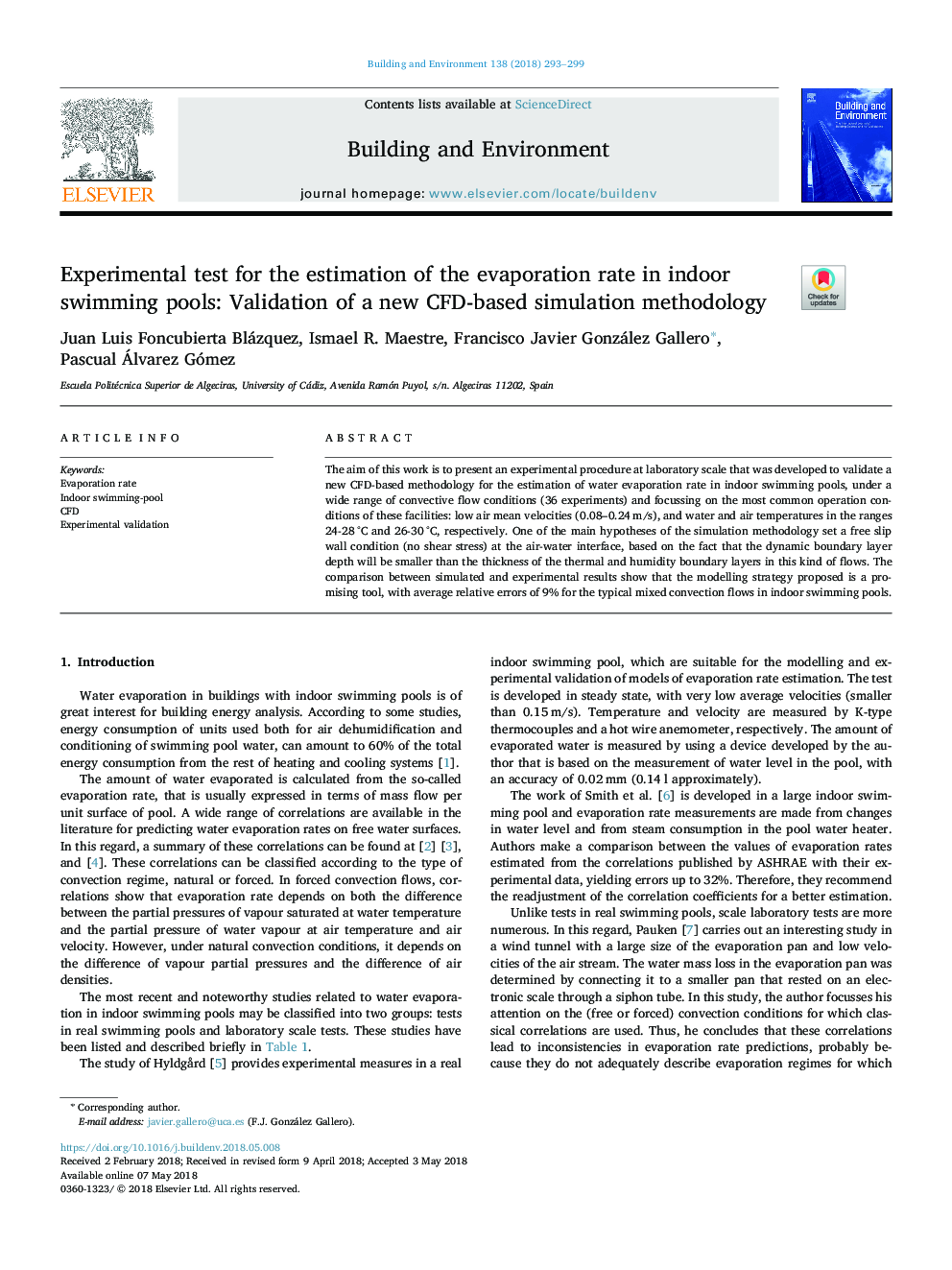| Article ID | Journal | Published Year | Pages | File Type |
|---|---|---|---|---|
| 6697254 | Building and Environment | 2018 | 7 Pages |
Abstract
The aim of this work is to present an experimental procedure at laboratory scale that was developed to validate a new CFD-based methodology for the estimation of water evaporation rate in indoor swimming pools, under a wide range of convective flow conditions (36 experiments) and focussing on the most common operation conditions of these facilities: low air mean velocities (0.08-0.24â¯m/s), and water and air temperatures in the ranges 24-28â¯Â°C and 26-30â¯Â°C, respectively. One of the main hypotheses of the simulation methodology set a free slip wall condition (no shear stress) at the air-water interface, based on the fact that the dynamic boundary layer depth will be smaller than the thickness of the thermal and humidity boundary layers in this kind of flows. The comparison between simulated and experimental results show that the modelling strategy proposed is a promising tool, with average relative errors of 9% for the typical mixed convection flows in indoor swimming pools.
Related Topics
Physical Sciences and Engineering
Energy
Renewable Energy, Sustainability and the Environment
Authors
Juan Luis Foncubierta Blázquez, Ismael R. Maestre, Francisco Javier González Gallero, Pascual Álvarez Gómez,
